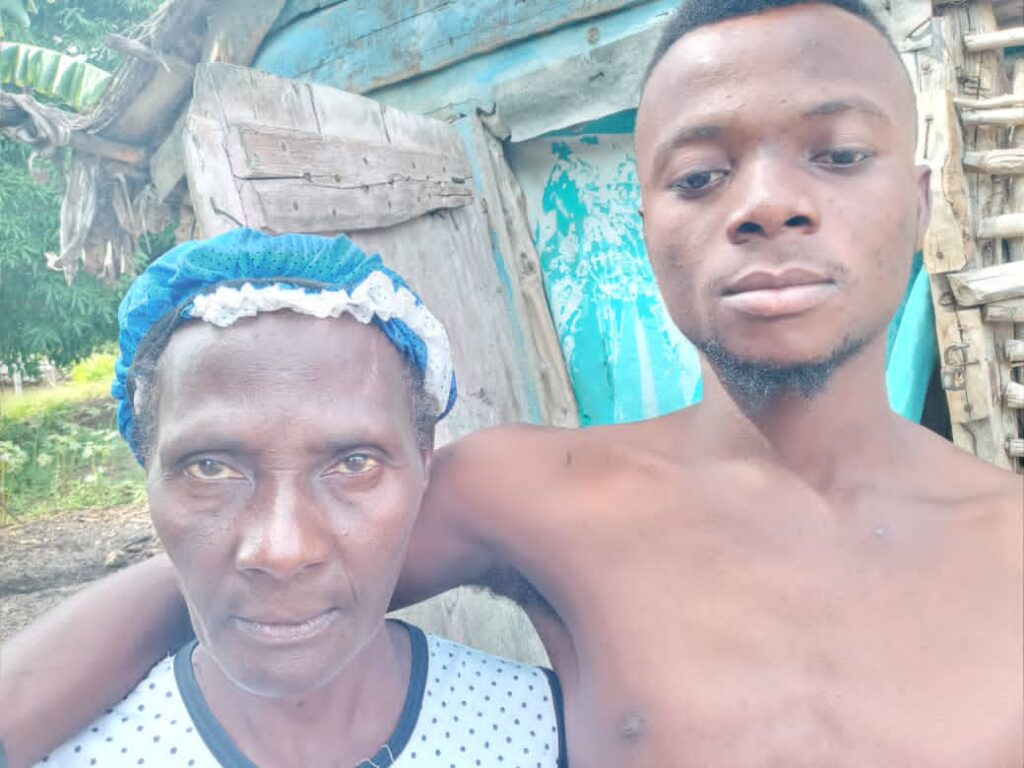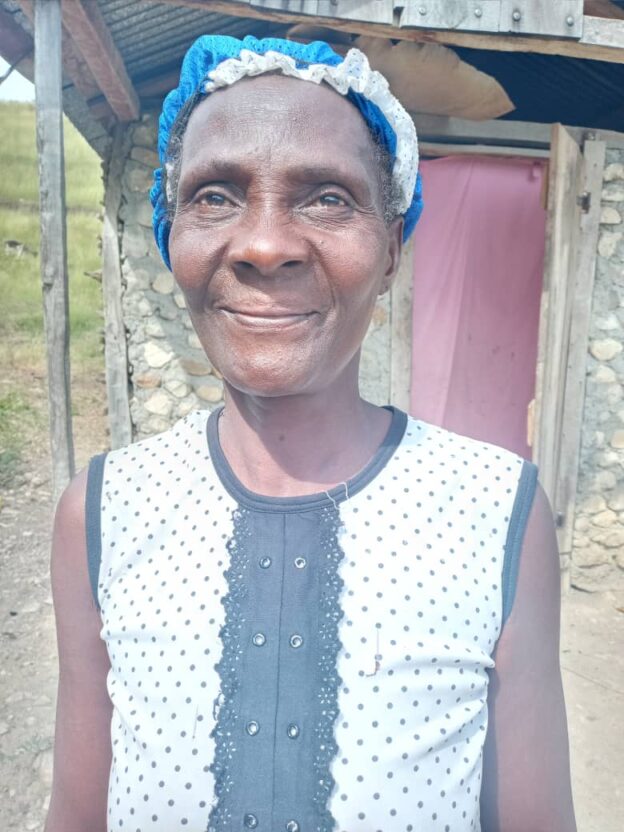Marie Tojou is not from Mibalè. She was born and spent all the early part of her life in Paredon, in northern Laskawobas, along the road that leads from the important market town of Kas southward to the Artibonit River. She split from her partner when she was in her 30s. They no longer had small children. Not knowing what else to do, she moved in with her sister, who was living in Niva, a farming community just south of downtown Mibalè. There she met Thomas, who also had older children already, and the couple moved in together onto his mother’s land. They quickly had a child together. By the time Marie joined the CLM program in 2013, she was in her mid-40s and they boy she had with Thomas was a young teen.
At the time, she and Thomas had very little. Thomas farmed land as a sharecropper, and they planted the steeply-incline plot of land leading from their hillside home down to the main road. Thomas would also buy trees from neighbors on credit and turn them into cooking charcoal. He’d repay a tree’s owner when he sold the charcoal. Marie herself would earn an odd gourd here and there by sorting and bagging charcoal for neighborhood producers. The family had no livestock, and their planting was limited by their ability to invest in seeds and labor. They often went hungry. Their boy Olma had been in school, but he stopped going when they could no longer pay. The loss of one of Marie’s older daughters in the 2010 earthquake removed an important source of support.
Marie chose goats and a pig when she joined the program, and her livestock prospered. Before she had been in the program for a year, her pig had grown enough that she was able to sell it and a couple of her goats’ kids to buy a small cow.
By the time she graduated in December 2014, she had that cow, a goat, another pig, and a handful of chickens. All-in-all, her livestock was worth more than twice the minimum value of productive assets that she needed to qualify for graduation. The couple had replaced the shack they were living in with a small, two-room house with a tin roof. Olma was in school, and they were eating two-three meals per day.
In some respects, their life six years after graduation has changed very little. Their main source of income is still the charcoal Thomas makes on credit, and Marie still sorts neighbors’ charcoal. They still have their one cow and two goats.
But there have been some changes nonetheless.
There is now a small, one-room house a few feet from their own. It belongs to Olma. He left school a few years ago, and started working on local sugar mills. He handles the bulls that turn the mill itself. He built himself his own small house with his earnings. “He doesn’t want to go to bed at night under his parents’ roof anymore,” Marie explains with a laugh.
And Olma’s presence in the household, if not in the house, is important, because Marie farms the hill in front of their home more vigorously than she once could because she can invest. Olma weeds and prepares the plot, and she plants it. Right now, she’s waiting on crops of plantains and pigeon peas. She points to her recent corn harvest. “I harvested 70 makonn. They’re hanging in that tree. Thomas harvested about 70, too.” A makonn is a braid of ears of corn. The individual braids are then braided into a bundle that hangs for storage in a tree.
She still has just two goats, but it is not that her goats have not been producing. She sells one now and again to buy food for the house or invest in the family’s farming. She now has a turkey as well because the last time she sold a goat, it was to buy food, and she didn’t want all the capital to be lost. “If you don’t manage what you have, you aren’t in the game.”
He one cow is not the cow she bought when she was in CLM. That first one was hard to handle, so she sold it and replaced it with another small bull. She, Thomas, and Olma took care of that bull until it was large enough to exchange for a good-sized young heifer. She thinks that it will be ready to be bred with a bull next year. She thinks of the calf as her hope that she will one day have the resources to buy some land.
What strikes me most about her story is that her sources of regular income have changed so little since she joined CLM. She can now sell an animal if she has to, but otherwise she and Thomas depend mainly on the same activities they already depended on. And those activities do not amount to much.
Since the beginning, the CLM program has been focused mainly on increasing its members’ wealth. We measure the assets they own that they could use to generate income as carefully as we can, but we don’t measure the income itself. I am not sure that there is anything wrong with that.
But perhaps at least our case management, or coaching, should focus more on ways that families can establish day-to-day and week-to-week cash income. That way, the capital a family accumulates — in livestock, for example — could be more an investment tool and an insurance policy that a source of the income the family regularly needs.

